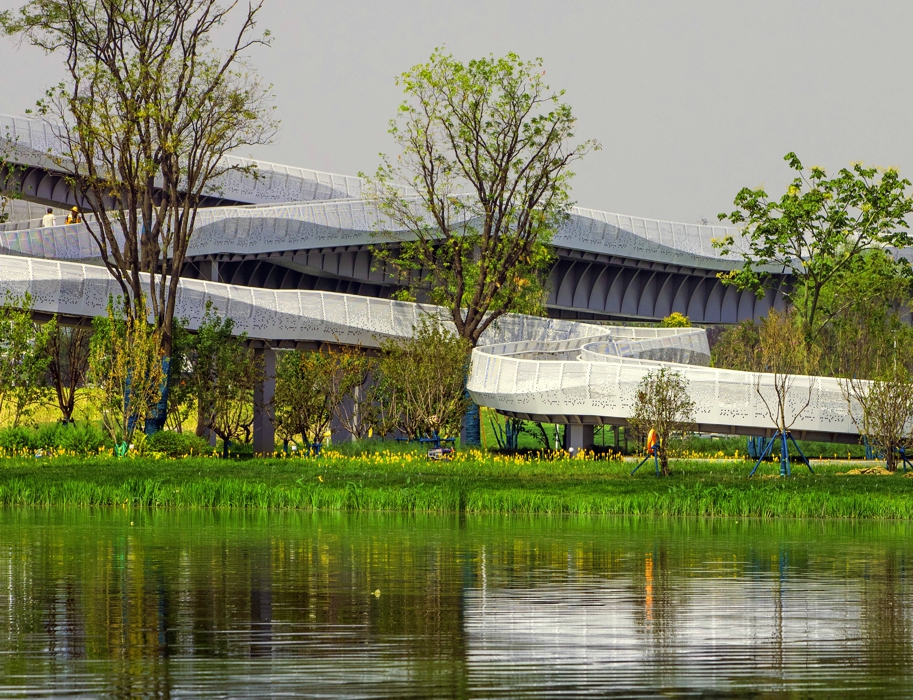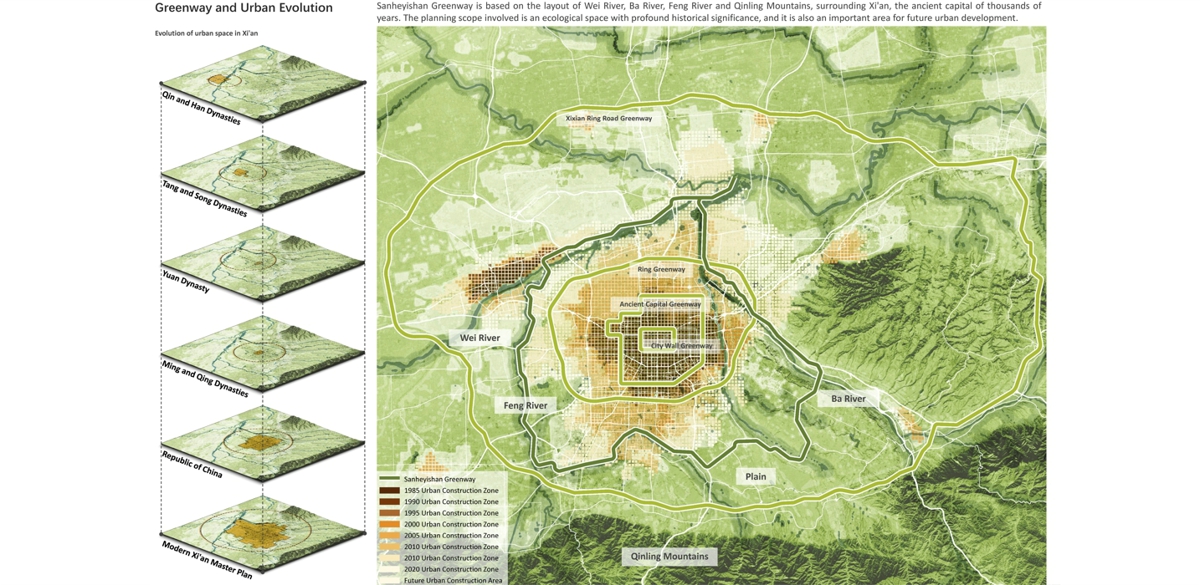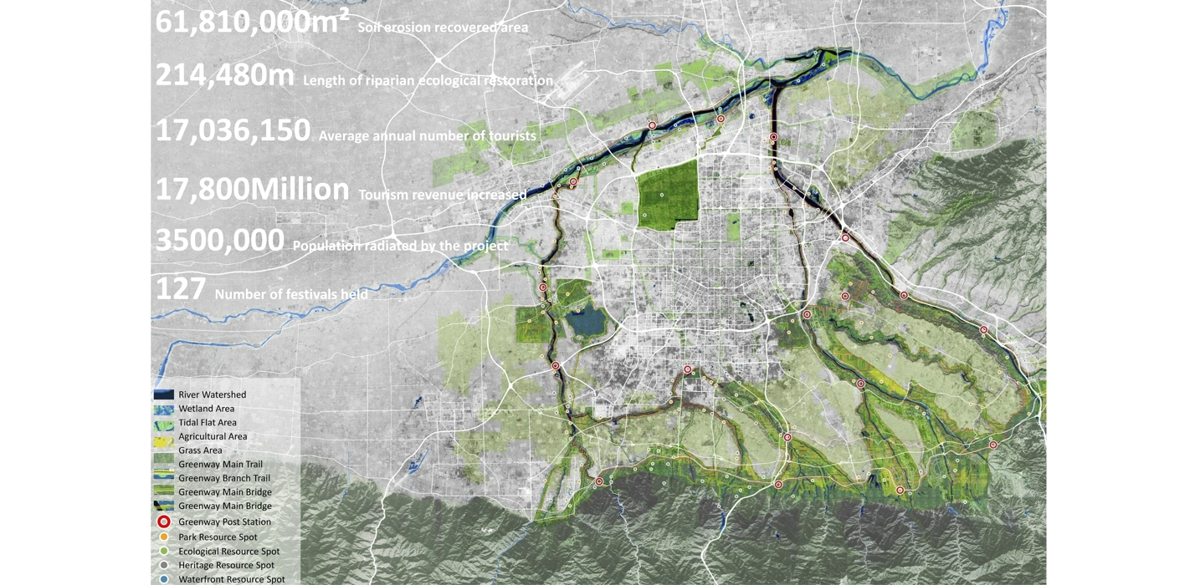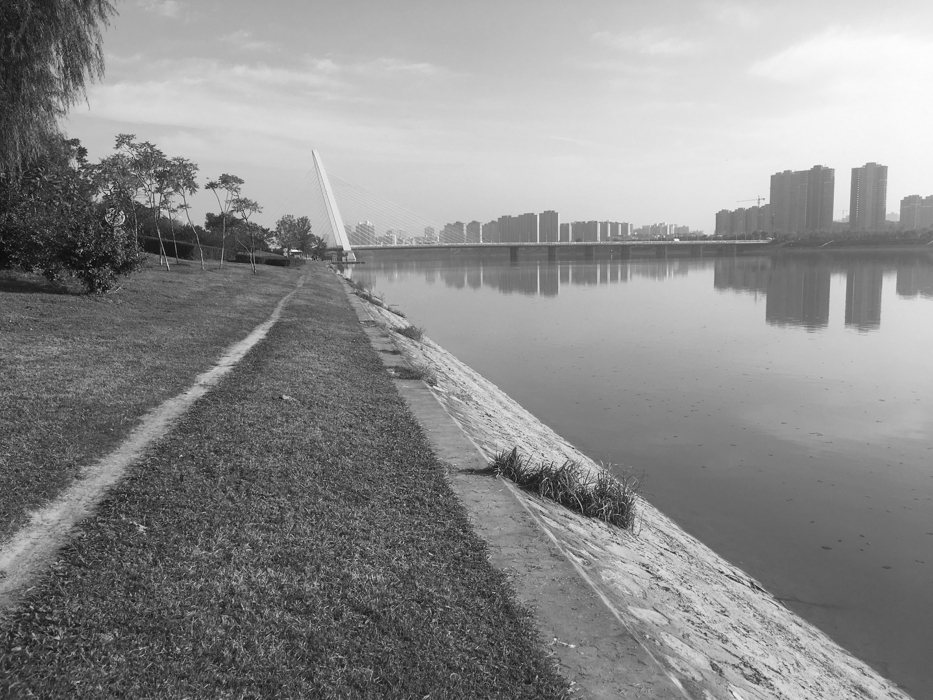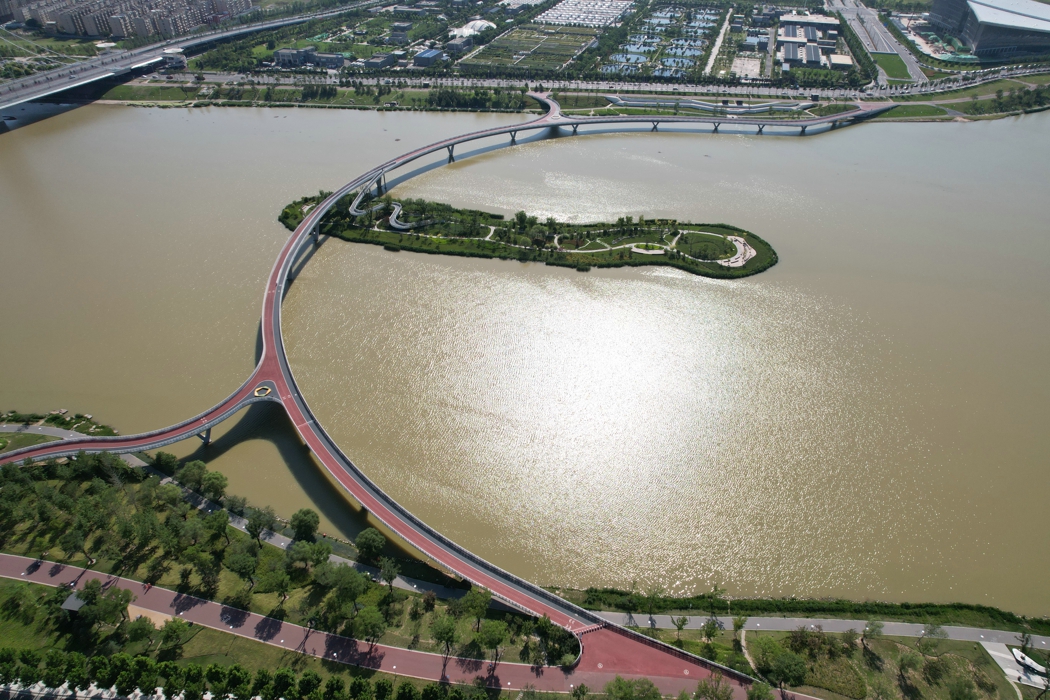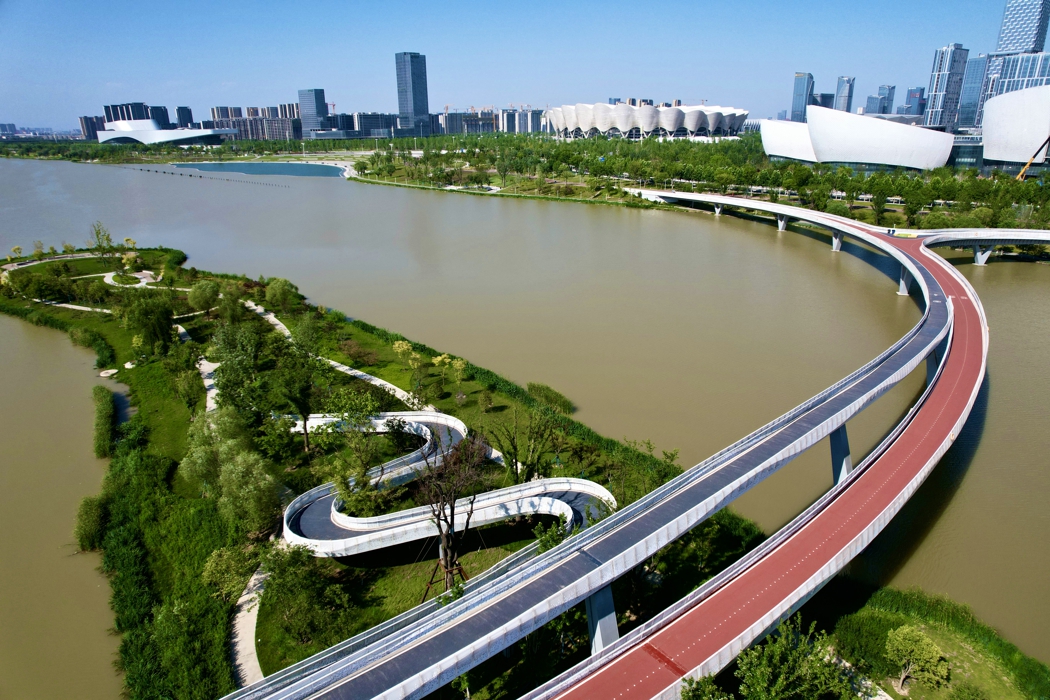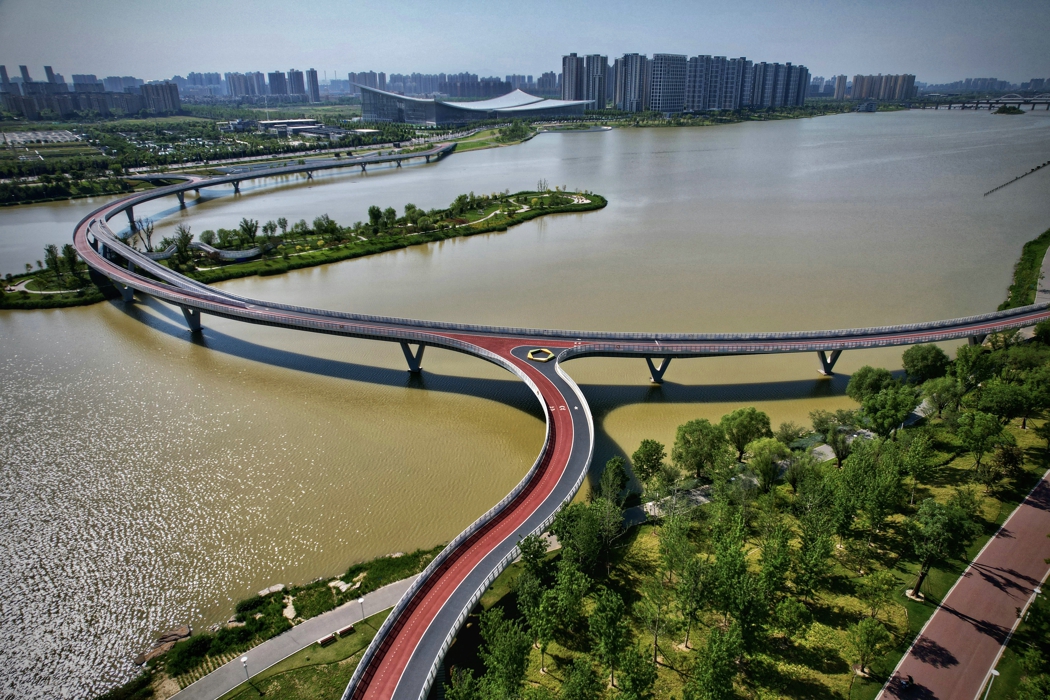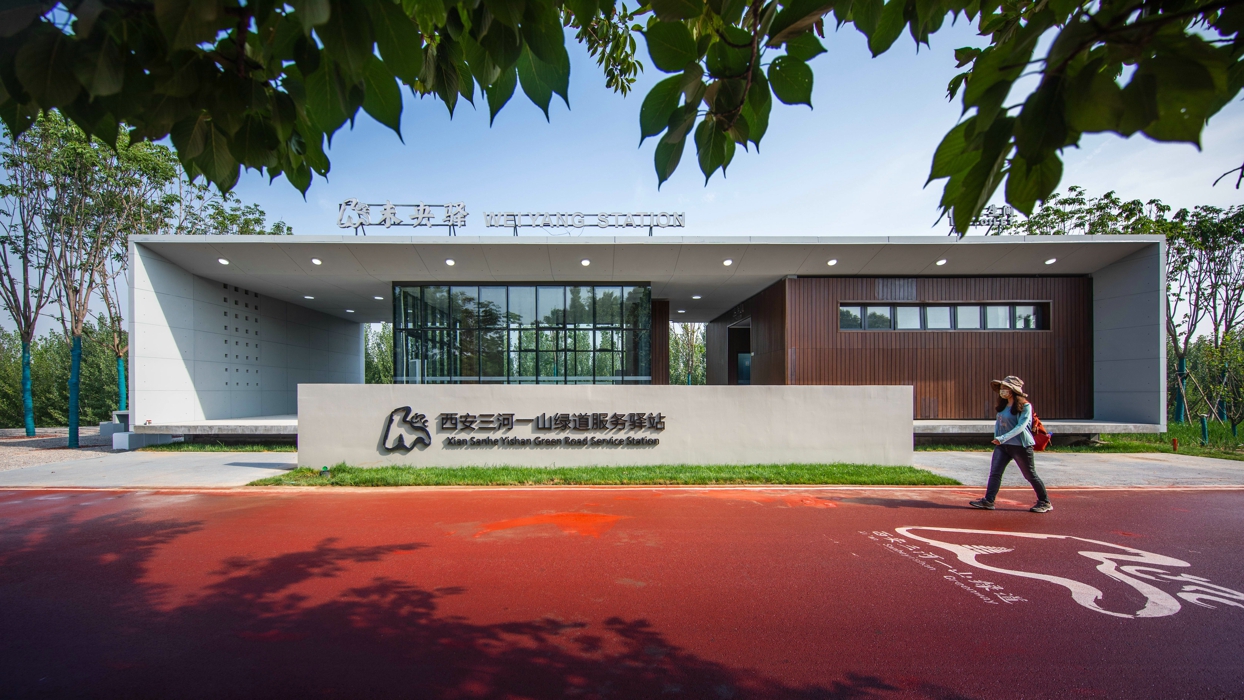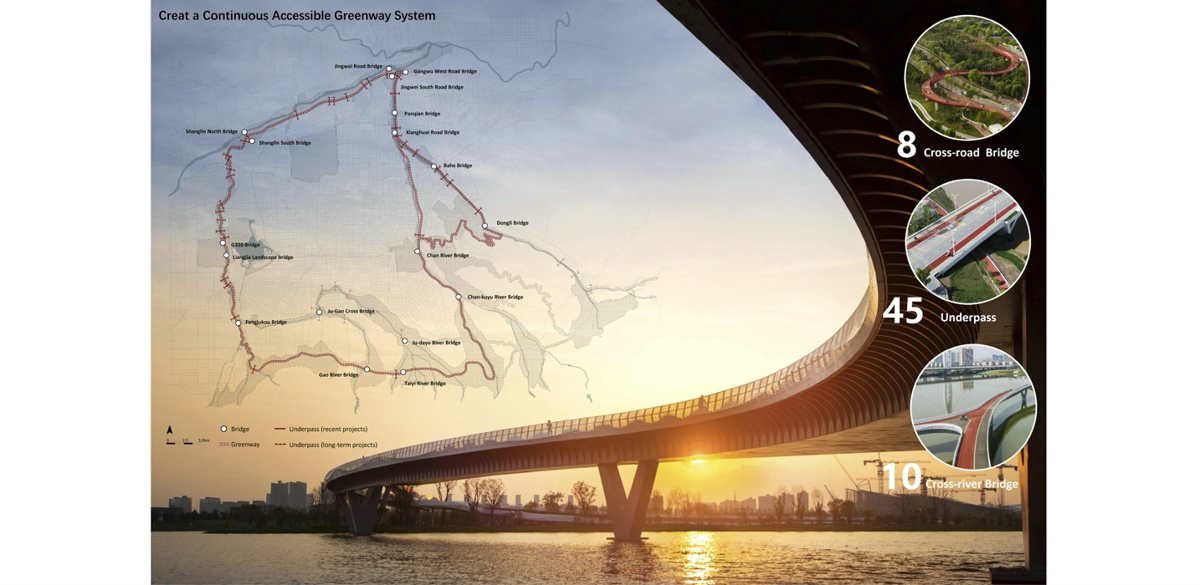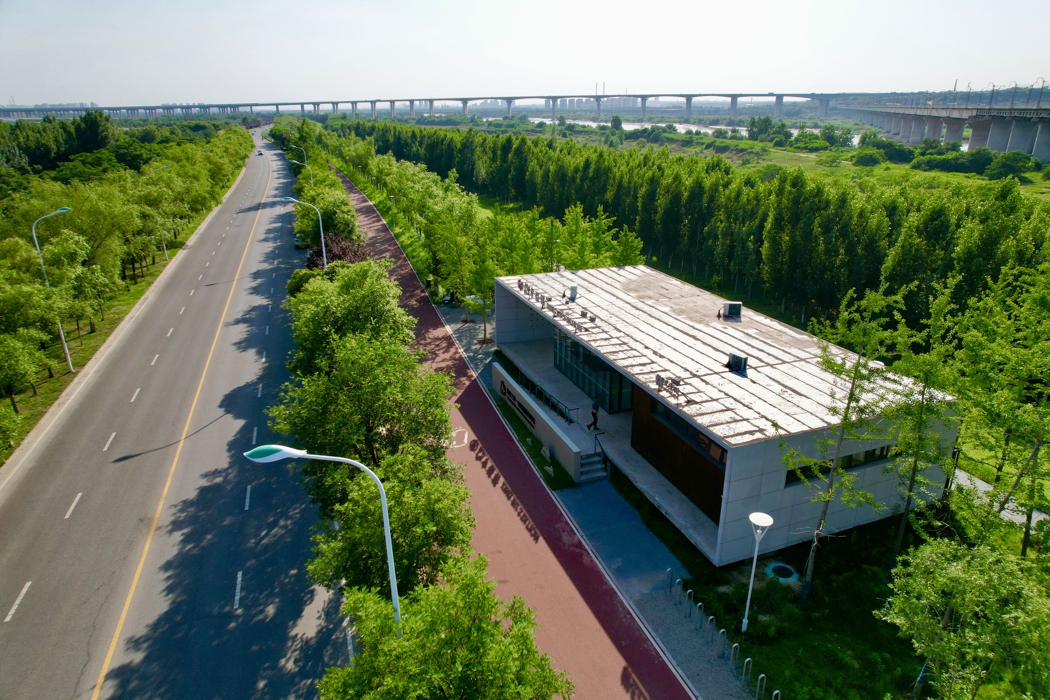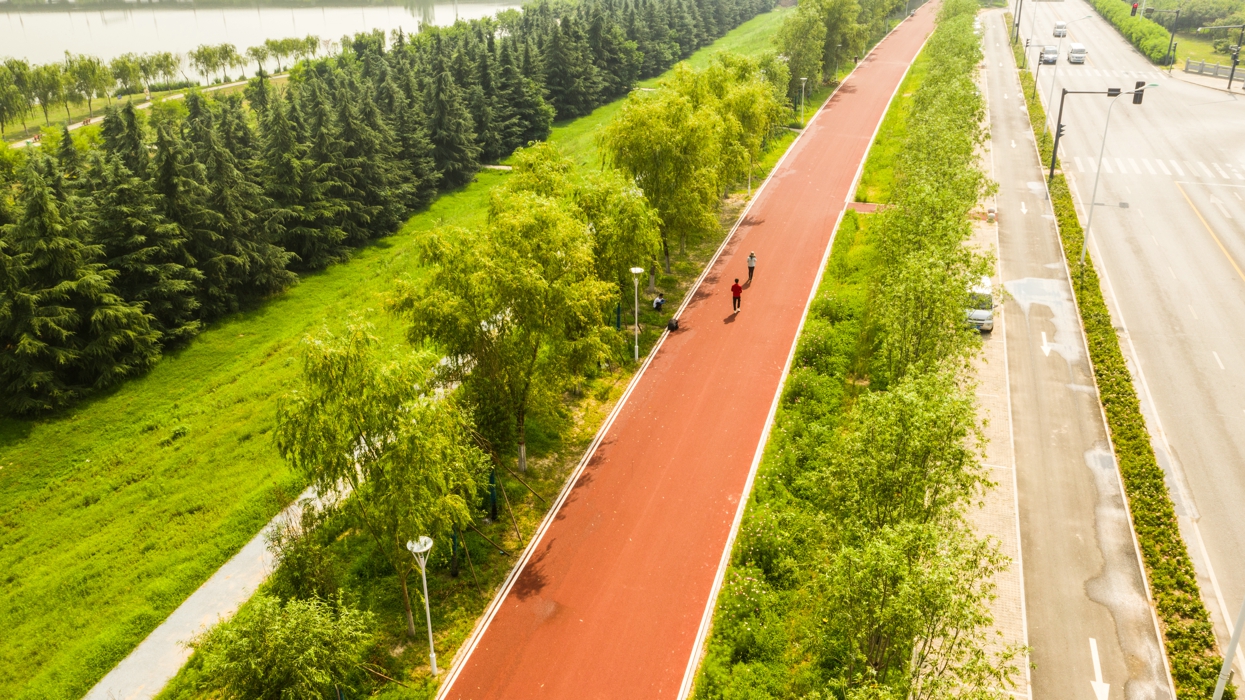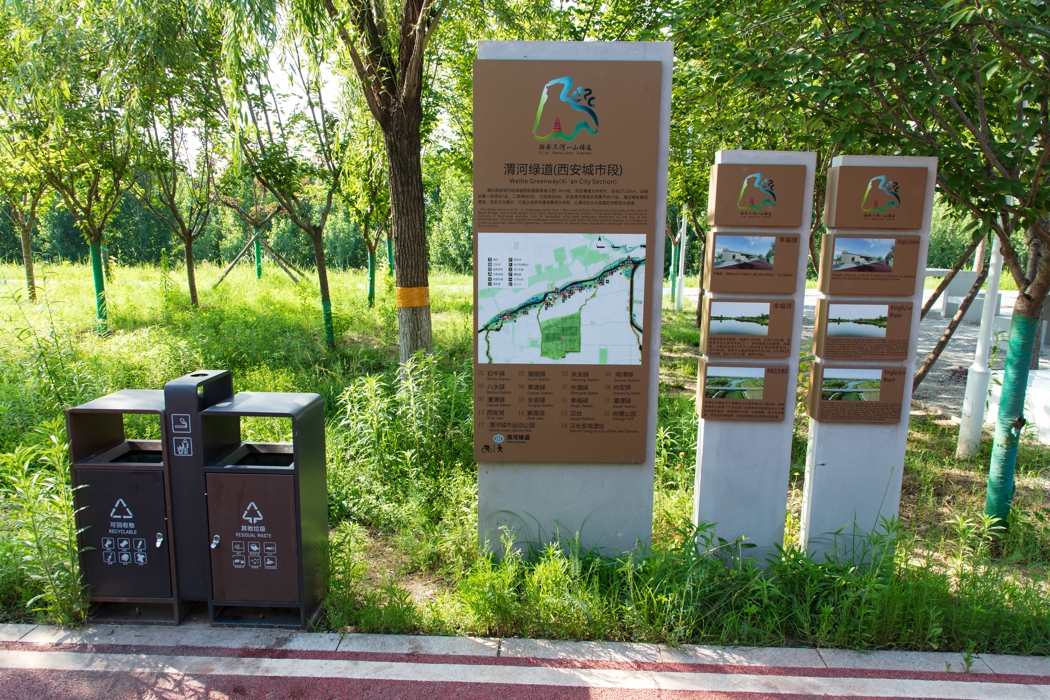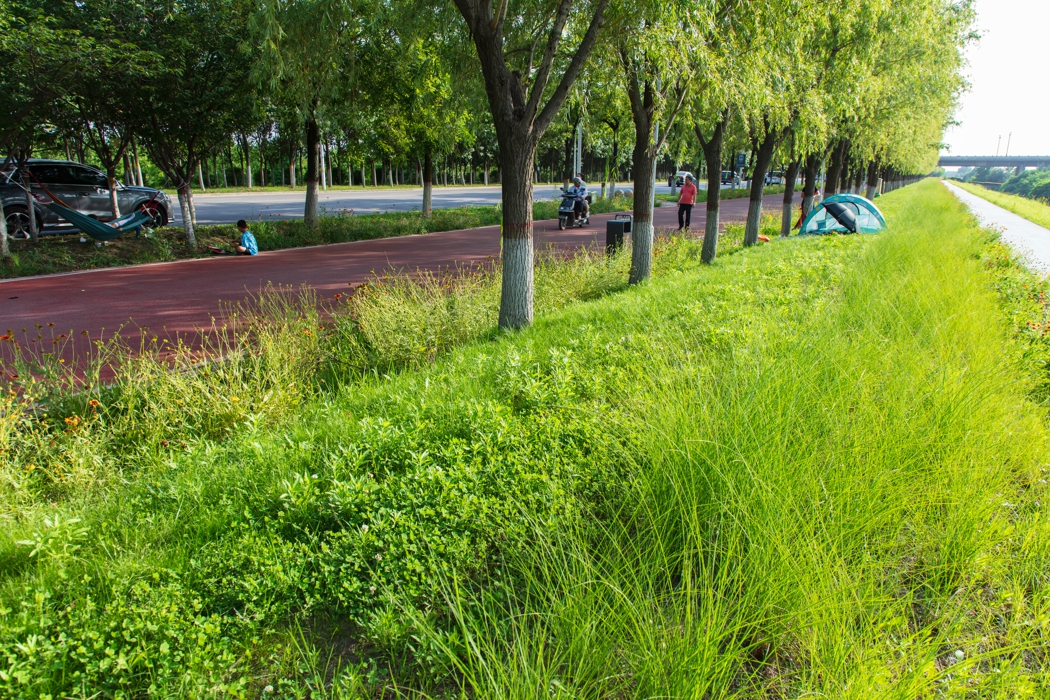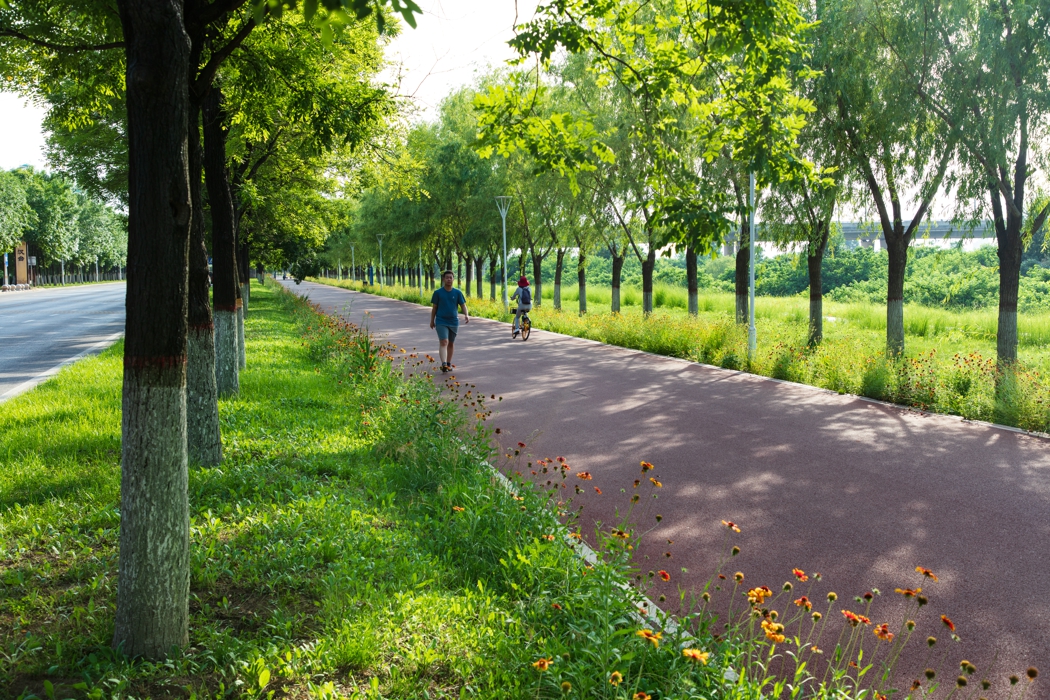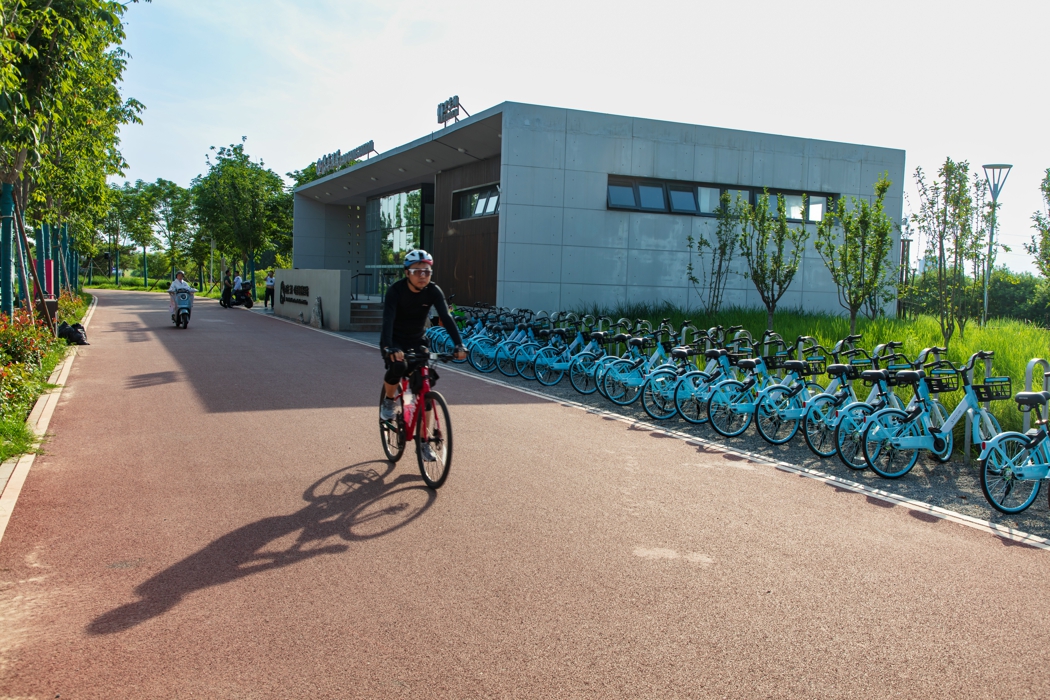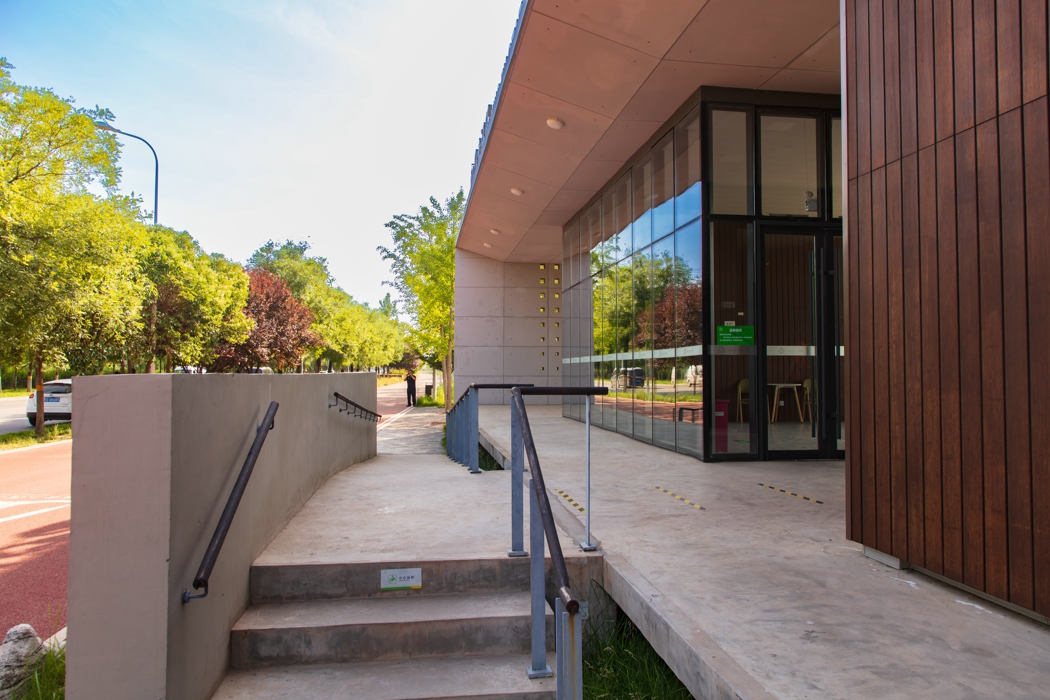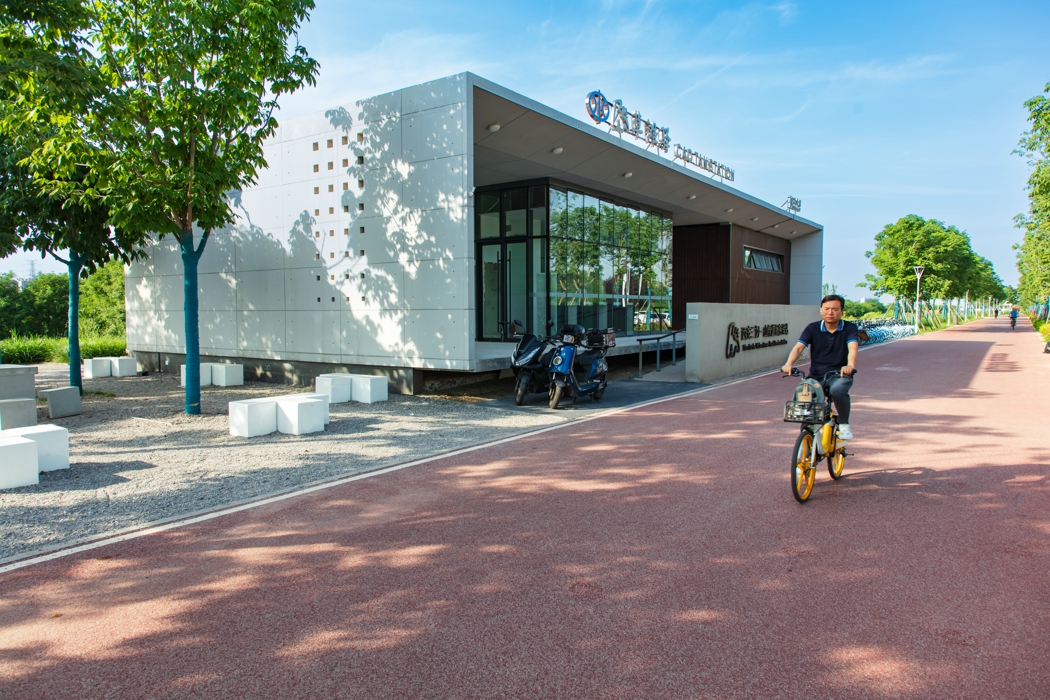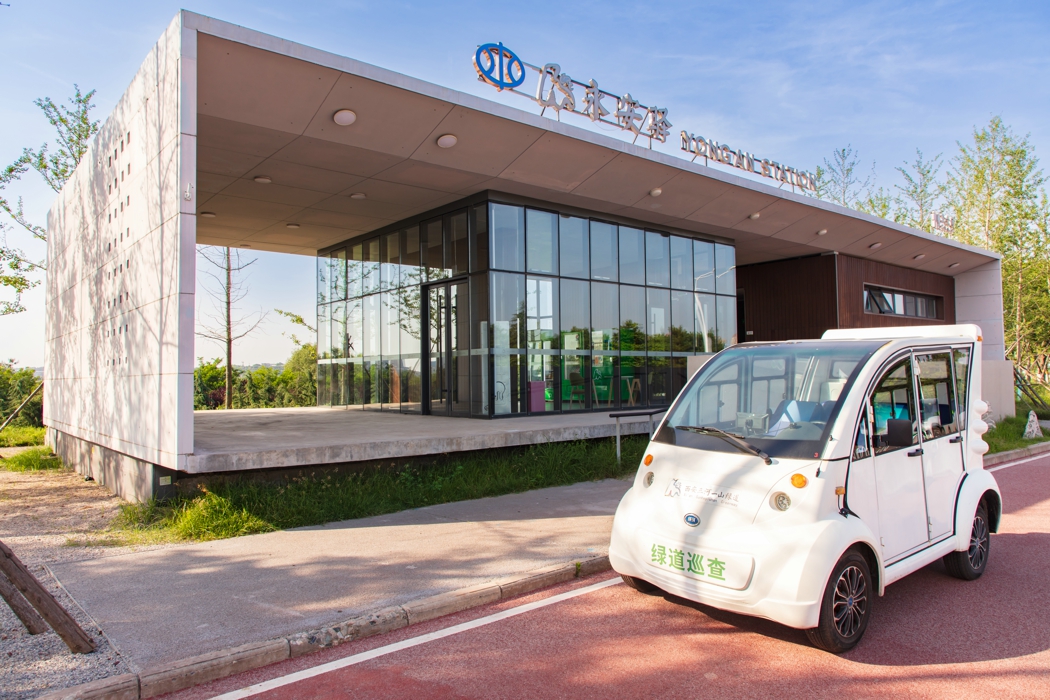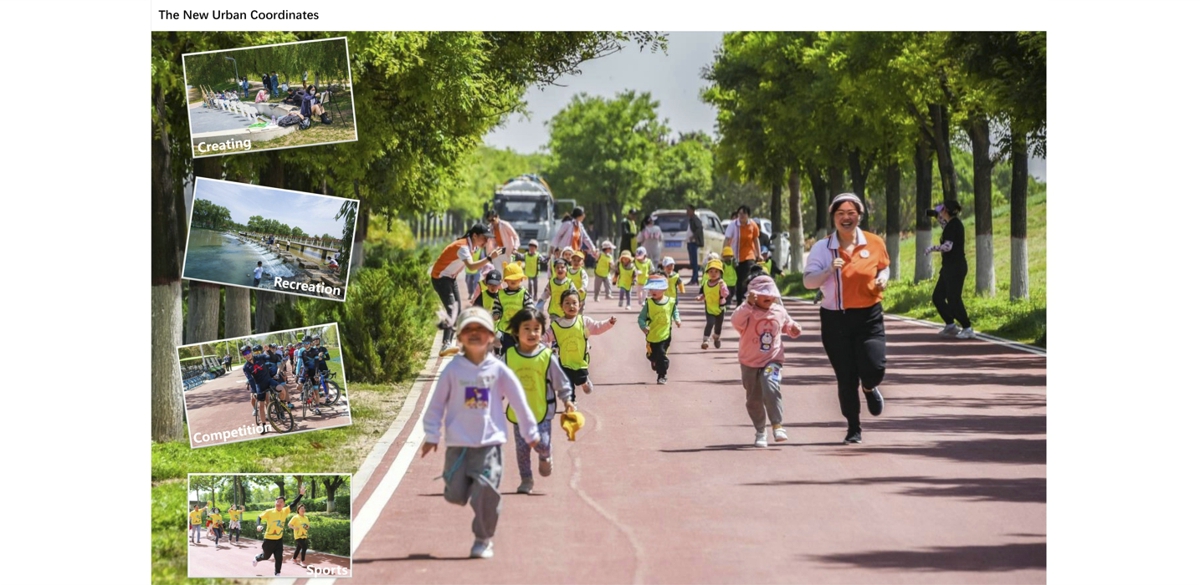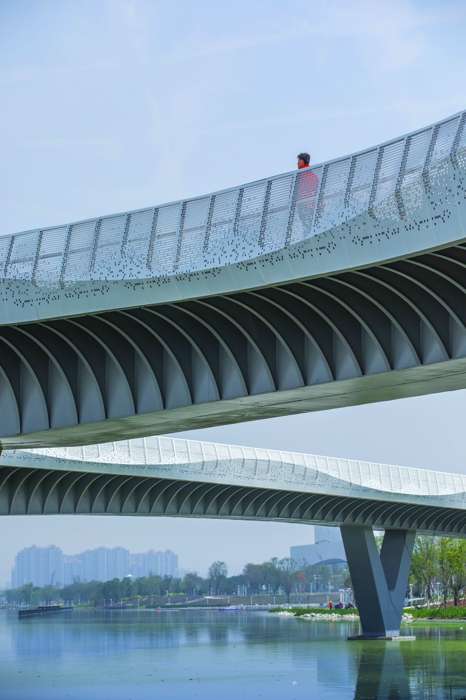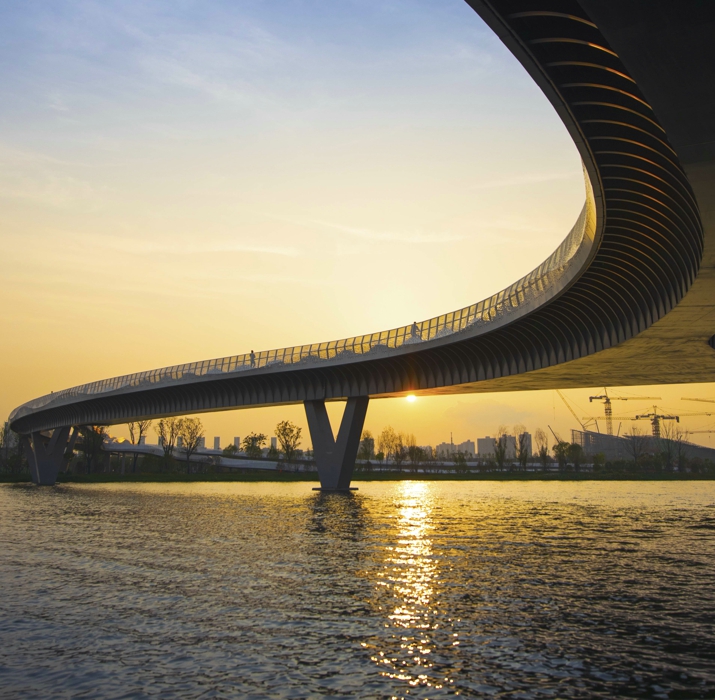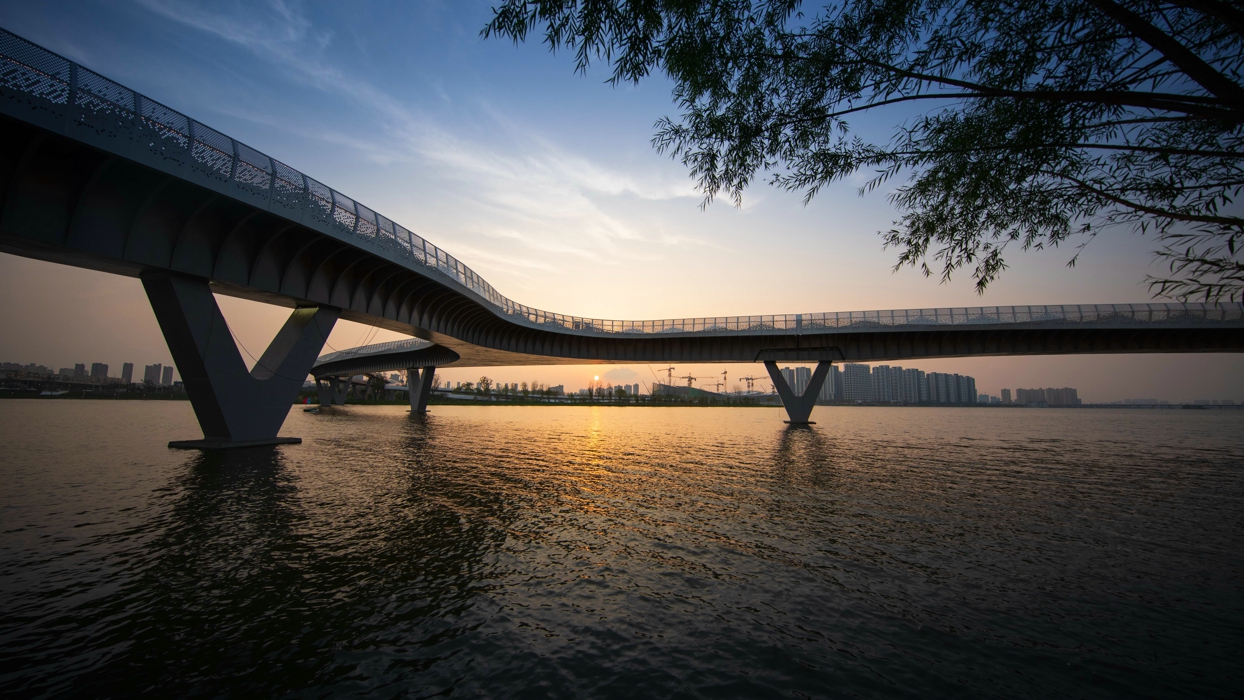Xi'an Sanheyishan Super Greenway
Project Information
- Project Location:
- China Xi'an, Shanxi
- Project Scale:
- 720 Square Kilometers
- Design Time:
- November 2020
- Build Time:
- July 2021
- Client:
- Xi'an Free Trade Port Urban Development Co., Ltd
Project Profile
1. Project Statement
As a thousand-year-old landscape capital and central city in Western China, Xi'an's protection and development is an important and continuing topic. When the ecological space around the city limits the city's expansion, the role of the greenway around the city is significant. It helps to facilitate the transformation of eroded natural spaces into urban spaces that promote ecological conservation and surrounding development of high-quality.
The design team planned and constructed a greenway around the city with a total length of 308 km and an area of 720 km2, which has achieved many goals such as ecological restoration, heritage protection, rural revitalization, and leisure and recreation. The project directly benefited 3.5 million people along the greenway.
It is foreseeable that Xi'an’s Sanheyishan Greenway will become a new model for Xi'an's ecological civilization and cultural heritage. It is also a new driving force for Xi'an's innovative development and urban-rural coordination, and will start a new journey from "ancient capital Xi'an" to "future Xi'an". More importantly, the greenway has dramatically increased the happiness of the Xi'an people.
2. Objective and Challenge
As a thousand-year-old capital on the Guanzhong Plain, Xi'an is close to the Qinling Mountains in the south, and eight rivers pass through the city. These elements constitute the ecological environment for the Xi'an people to survive from generation to generation. With the continuous expansion of the urban scale, urban space has gradually invaded important environmental areas around the city, such as the Qinling Mountains, Ba River, Feng River and Wei River. Achieving ecological civilization and high-quality development based on coordinating the protection and development of the ancient city has become a significant challenge for the future construction of Xi'an.
(1)Imbalance between drought and flood
Urban construction and farmland reclamation along the river have led to the rapid reduction of river wetlands. The adaptability of rivers to extreme climate changes is reduced, severe water shortages in dry seasons and floods in rainy seasons continue to occur, and soil erosion and water pollution are caused.
(2) Habitat degradation
Hardening of river shorelines, damming, and deforestation of ecological forests destroy the habitats for animals such as fish, amphibians, and birds, which intensifies the fragmentation trend of the habitats. At the same time, it also reduces the quality of habitat and biodiversity.
(3) Reduction of local characteristics
The plains at the foot of the Qinling Mountains have unique climate and soil conditions. This is the iconic origin of many high-quality agricultural products, so it is also known as the granary of Guanzhong. However,many artificial gardens in urban construction have replaced pastoral landscapes, causing local characteristics to gradually disappear.
(4) Isolated heritage protection
Xi'an's thousand-year history makes it rich in precious heritage resources. However, the current heritage protection work is limited to independent cultural sites, and there is a lack of protection for serial heritages and historically significant environments. A complete heritage protection system has not been constructed, resulting in the gradual destruction of many unrecognized heritages.
(5) Recreation fragmentation
Natural resources and cultural resources are scattered and/or divided. These resources are divided by the urban road network, and it is difficult to form a continuous recreational network. There is also a lack of interaction between recreational resources and urban space, making it difficult for citizens to use them.
3. Design Strategy
Due to the project's large scale and comprehensive nature, we have formed a planning team composed of professionals in landscape architecture, geographic information systems, water conservation, tourism, cultural relics protection, architecture, roads and bridges, and etc. The team also cooperates with research institutes, local design institutes, and expert consultants. At the same time, we extensively listen to the opinions of local people to jointly carry out planning and design. As a technical service unit, the team also participates in the review of each section of the greenway’s design plan, the construction effect inspection and acceptance, user feedback, etc., to ensure the implementation and revision of the greenway’s planning.
(1) Construct ecological infrastructure and spatial control measures for the greenways
Construct the ecological infrastructure of greenway that integrates the security pattern of water, biology, recreation and heritage, and coordinates with construction land, farmland protection and traffic development.
The refinement to the ecological infrastructure incorporates a total of 30 ecological control units, including three-level corridors, two-level patches and one-level matrix. It also incorporates three spatial control units, namely, ecological management, ecological restoration and construction guidance, which are regulated in the national territorial space planning information platform.
(2) Create a colorful nature with clear water, green mountains and high yields
Build nine flood detention wetlands, five rainwater parks and three sewage purification parks along the river. Establish a healthy water system in the whole basin through rainwater absorption at the source, the deceleration and retention during the process, and the elastic adaptation at the end, mitigating risks of flooding and drought, purifying and reserving water.
Focus on the restoration of river valley and plateau vegetation. Optimize the planting structure through the pioneering species restoration method for afforestation and food source plants replenishment. Create a native vegetation system in the piedmont plain at the northern foot of the Qinling Mountains to improve habitat quality and biodiversity.
Integrate and upgrade 15 unique farms. Establish sustainable agriculture through traditional green agricultural techniques such as planting and breeding rotation, crop rotation, and intercropping. Establish an ecological agricultural landscape with local characteristics.
(3) Protect and revitalize natural and cultural heritage, presenting the vivid ancient capital landscape culture
Explore relevant heritage and settlement remains, historical environment, and other cultural remains along the greenway of Xi'an ancient canal and ancient post road culture. A complete heritage space network will be constructed based on the excavated 42 cultural site areas. For different types of heritage, adopt various methods such as preservation and display, functional implantation, organic renewal and style creation to protect and utilize the heritage in a living manner.
Combining natural and cultural heritage, build an online interpretation system with panorama, virtual experience and online tour functions. Establish a unified station, icon, LOGO and other offline interpretation facilities, improving the greenway interpretation system.
(4) Create continuous and diverse recreation corridors for better life
The total length of the primary and branch lines of the planned greenway is 308KM. The lines connect a total of 103 recreational spots, several commercial centers, characteristic towns, tourist attractions, parks, and urban renewal areas. Provide tourists with a consistent recreational experience along the greenway
Guide the greenway to penetrate into the city from the nature. Combined with site characteristics, four different spatial connecting methods are formed: city and river, city and forest, city and natural scenic spot, city and pastoral. Promote the integration of nature and cities in ecological, economic, social and cultural scenarios.
Build a 74KM long barrier-free passage in the greenway of the urban section. Provide visitors with a continuous scenic experience that is not disturbed by the traffic network through crossing under and overpassing above the municipal road, and bridges across the river. The art and ecological nature of roads and bridges are perfectly combined.
4. Conclusion
By the end of 2021, about 1 billion dollars have been invested in greenway construction. The 205km greenway main line and the 74km handicap accessible sections have been connected, about 36km of river shorelines have been restored, and a large number of migratory birds have returned to the city. About 150 species of animals have been found, including the first and second-level national protected animals such as white spoonbill, whooper swan, and oriental white stork.
During the 5-day holiday of Labor Day in 2021, Xi'an’s Sanheyishan Greenway received 433,400 tourists, surpassing Qin Shi Huang's Mausoleum Museum and becoming the third most visited scenic spot in Xi'an. As Xinhua News Agency reported: "On this high-value landscape greenway, people can ride bikes, walk, listen to the water and appreciate floral beauty. They can see the historical charm of the ancient capital, while recalling with nostalgia in the thick green and experiencing a full sense of well-off life.”
Xi'an’s Sanheyishan Greenway is a theory applied to the continual urbanization and development of Xi'an. It will change Xi'an from "ancient capital" to "future city". More importantly, the greenway has greatly increased the happiness of the Xi'an people. This is the beginning of a new era for Xi'an's ecological and cultural heritage, and a driving force for Xi'an's innovative development and urban-rural coordination.
